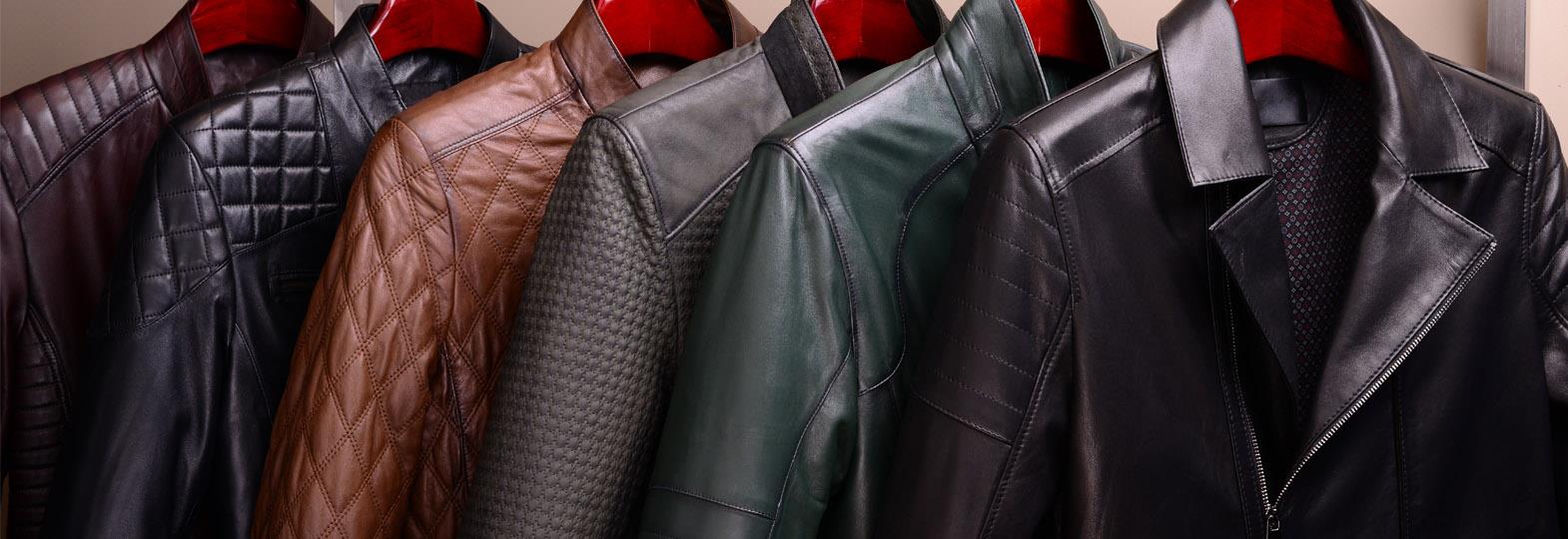A few items of clothing are considered classic when it comes to luxury fashion, such as the trusty leather jacket. For many years, it has been a status symbol and representation of wealth, and doesn’t seem to be losing popularity anytime soon.
This fashionable material has a long history. Contrary to popular belief, leather was crucial to the survival and development of humanity. The Cro-Magnon Man, who lived 50,000 years ago, used it for warmth and protection. Since the early 1900s, leather has been welcomed by the fashion world and affluent consumers alike, and it is still a favourite among some of the most fashionable figures today.
During the years, in addition to colourful makeovers and bizarre outfits which we would like to consign to history books forever, the leather jacket has weathered many storms to maintain its standing as a fashion icon. The truth is that leather has been a part of fashion for a while, even though it constantly reinvents itself. The ancient Greeks and motorcycle gangs worldwide wore it, and it has since become a staple of contemporary subcultures.
History of Leather
1. Upper Paleolithic Period:
Since the time of the Cro-Magnon man who lived in Europe during the Upper Paleolithic Period about 50,000 years ago, leather has been used to make garments. At this time, people began migrating from the earth’s tropics to the northern hemisphere, where it was much colder.
To treat animal skins, prehistoric people used various techniques, such as boiling the skins in tree bark to soften them, and nearly all methods involved rubbing the skins with animal fat to maintain pliability. It was in the colder climate that prehistoric people first discovered that animal skins could be used to make clothing.
2. Sumeria and Mesopotamia:
Additionally, there is evidence that women in Sumeria and Mesopotamia wore leather clothing as early as the 5th to 3rd millennia BCE. A nearly fully restored loincloth made of gazelle skin, dating from 1580 to 1350 BCE, was discovered in Egypt in the early 1900s.
In the centuries that followed, several countries, including France, Spain, and England, started refining their own tanning methods, which later developed into profitable industries.
3. Native American Oil Tanning:
Native Americans taught early European settlers in North America the art of oil tanning, well before the emergence of online blackjack.
Native Americans made leather tepees from animal skins that had undergone oil tanning and decorated them with bones, feathers, beads, and porcupine quills. They also painted complex patterns on their clothing.
Native Americans were able to make white leather, which is a very difficult colour to achieve, due to their exceptional tanning skills.
4. Industrial Revolution:
The demand for leather skyrocketed during the Industrial Revolution in the early 1800s. Leather was needed for clothes and footwear, for the belts that powered the many new machines, and for the tremendous increase in the production of leather goods. With leather belts powering machines, more leather goods could be produced more quickly.
Gradually, communities formed around tanneries. The relationships between consumers, leather workers, tanneries, and hide skinners became formalised. The leather industry became a fundamental aspect of culture and way of life around the world.
5. Faster Method of Tanning:
In the 19th century, American chemist Augustus Schultz discovered that using chromium salts could speed up the tanning process. This allowed tanning to be completed in hours instead of weeks or months. Engineers in the United States and Europe then developed equipment and procedures to further improve tanning production. To maintain a competitive advantage, tanneries now kept their procedures and techniques confidential. Some tanneries even started exploring vegetable tanning as an animal-friendly alternative to leather from animals.
Leather Trading
The history of leather dates back to around 1200 BC, when the Ancient Greeks used leather to create sandals and clothing. The production of leather soon spread to Egypt and Rome, where it was prized by Pharaohs and Queens and used by foot troops to make armour and protective clothing. As societies became more advanced, the production of leather increased and skilled craftsmen began to form trade guilds to protect their ownership of tools and control the supply of materials.
Vegetable tanning was the primary method of leather production until the 19th century, when chrome tanning, which uses chemicals to simplify the production process, became more widely used. Today, chromium is used in 80-90 per cent of tanning procedures globally.
Today, the leather goods market is estimated to be growing globally at a CAGR of around seven per cent. Rising consumer disposable income, shifting fashion trends, higher living standards, and expanding tourism are the main drivers of this growth. The demand for stylish, practical leather clothing, accessories, and footwear is expected to have a positive impact on the industry.
The Present Day Scenario
Due to its durability and luxurious appeal, leather has been widely used in various forms of fashion. In Middle Eastern countries, traditional dresses like Kebaya or Abaya were often made from high-quality leather, reflecting the preferences of royalty members who desired more intricate details in their clothing. Similarly, Germanic warrior tribes would don fur-lined leather suits, demonstrating the versatility and importance of the material for protection against cold and wet weather and for its glamorous aesthetic.
In modern times, leather faces competition from synthetic materials such as rubber and plastic. Nevertheless, the industry continues to evolve, with trade organisations working to build partnerships in networks that produce and distribute leather globally, much like the leather guilds of the Middle Ages.
Today, men’s wardrobes typically include several staple leather pieces, regardless of budget, ranging from synthetic fur garments to full-grain cowhide essentials. The options available range from casual bomber jackets and biker jackets to more sophisticated mochas with muted finishes, making it possible to accommodate seasonal changes and keep a robust spirit alive without fear of the material quickly fraying. The care instructions for leather are also relatively simple, with primitive methods such as saddle oil used to nourish its fibres and preserve its flexibility for a timeless style statement.
Women’s fashion is also following a similar trend, with calf, lamb, and sheep hides used to create soft and flattering outerwear pieces. These pieces appeal to a trendy audience with fashionable fits, intricate stitch detailing, and effective colour contrasts that convey a strong personality.
In short, leather continues to remain a versatile and essential material in the fashion industry, offering durability, luxury, and timeless style for both men and women.
The Future
Historical fashion trends featuring leather will always remain popular due to its long history. However, designers also continuously seek new and creative ways to showcase the timelessness of this fabric and its versatility. Exotic leathers like crocodile, ostrich, and snakeskin are becoming increasingly popular, in addition to classic finishes such as suede and patent.
The genuine leather segment held the largest market share with over 50 per cent in 2021. However, consumers are also demanding synthetic leather goods due to their attractive appearance and lower price compared to genuine leather products. During the current decade, the synthetic leather market is expected to grow at a slightly higher CAGR of 7.5 per cent. The growth is attributed to the low cost and durable design of various product categories. Eco-friendly solutions for plastic leather products, such as compostable PLA maize plastic leather and flexible, heavy-duty products made from materials like PET, are also predicted to drive the industry forward.
Meanwhile, innovation is disrupting the leather industry in response to climate change, as new materials and treatments are being introduced. Technology is driving advancements, leading to the creation of new finishes and textures in bio-based materials. Alternatives to bovine leather, such as leather made from invasive species that support small-scale ecosystems, are also gaining popularity. Below are the steps taken by some of the leading fashion players:
• Puma SE launched the first three pairs of Xetic sneakers with Porsche design in August 2020, featuring performance and casual clothing made from 100 per cent recycled mesh, 100 per cent chrome-free leather, and liners containing 30 per cent algae.
• Nike, Inc released its first vegan leather SB Dunk sneakers in January 2021, which are cruelty-free and part of the company’s 2019 Zero Waste Initiative.
• Adidas AG announced in January 2021 that it would release a new range of trainers made from mushroom leather as part of its sustainability initiative. The company teamed up with Stella McCartney, Lululemon, and biotech firm Bolt Threads to produce the plant-based vegan leather footwear.
• Other leading companies such as Karl Lagerfeld, Fossil, and Everlane have started offering products made from cactus leather.
• Mercedes-Benz introduced an electric concept car featuring its automotive faux-leather material, Deserttex.
Leather trends in 2023-24
Leather continues to be a dominant trend in 2023-24, especially in street style. In the fall of 2022 and winter of 2023, the biker chic look was prominent, featuring everything from oversized leather jackets to boots, dresses, bags, and fingerless gloves. The following leather trends can be expected in 2023-2024:
• Padded Leather: Luxury brands like Bottega Veneta have already embraced padded leather as a prominent trend for early 2023.
• Textured: Textured statements made with cutting-edge technologies will replace flat leathers as the next popular trend.
• Eco-Friendly Alternatives: Designers and consumers are embracing a wide range of eco-friendly materials, such as coffee, seaweed, mushrooms, and fish skins.
• Worn-Out Leather Look: Designers are taking inspiration from the ‘worn-out’ effect as consumers embrace vintage apparel, creating degraded leather surfaces and pull-up finishes.
• Bright, Vegetable-Tanned Natural Dyes: Vegetable-tanned leathers will replace hazardous and toxic chrome-tanned skins as the newest trend in eco-friendly and attractive leather looks.
• Regenerative Leather: INVERSA Leathers has paved the way for the leather industry’s future with its regenerative, intrusive leather. This trend will be a hot topic in 2023, as regenerative textiles guarantee that the company goes above and beyond sustainability and actively benefits the environment.
• Exotic Prints: In 2023, fashion will continue to feature natural fibre clothes and accessories with animal patterns, such as pythons, panthers, and other creatures from arid environments. This trend may intersect with the growing popularity of regenerative exotic leathers as customers become more knowledgeable about sustainable fabrics.
Ending Note
There is a growing demand for leather bags, footwear, and apparel in emerging economies across the globe. Leather continues to be a popular choice for its versatility and durability and remains an essential part of the fashion industry.














Comments